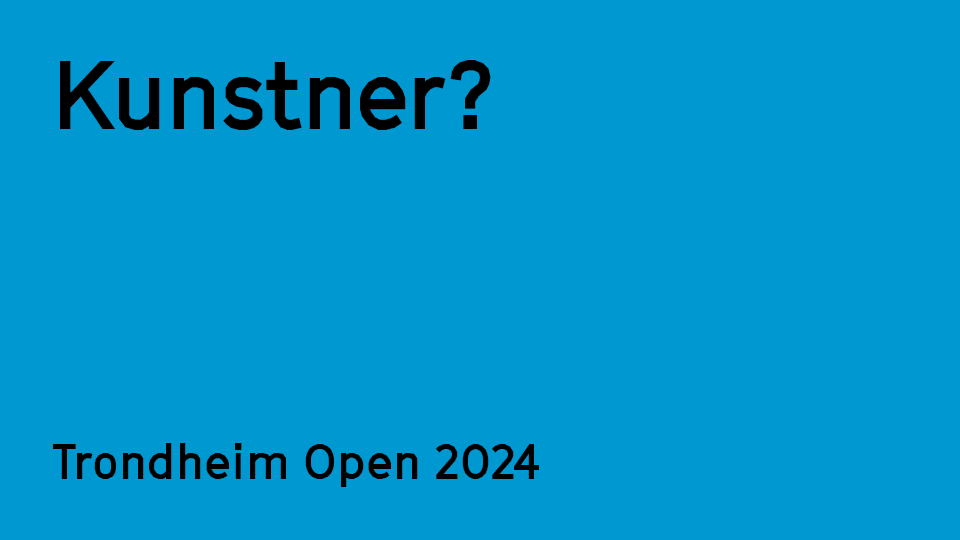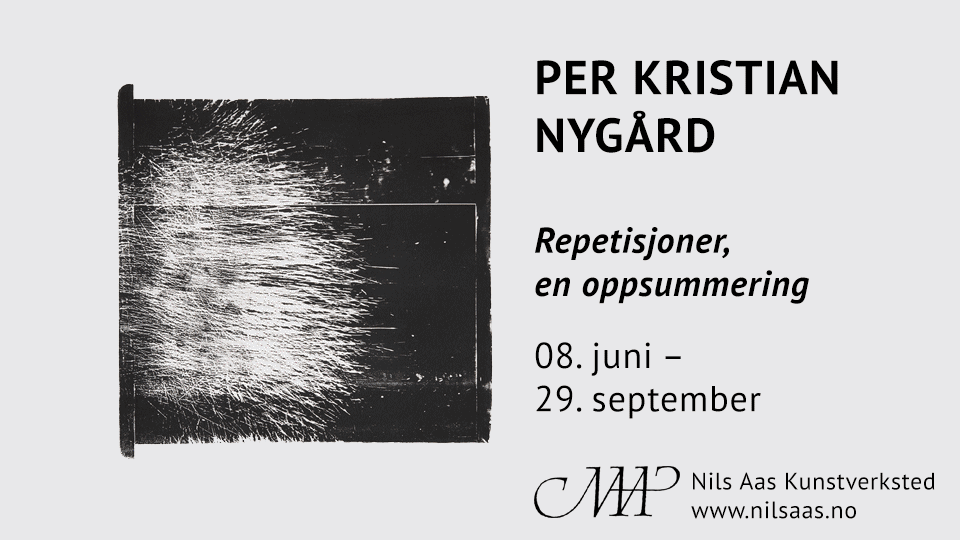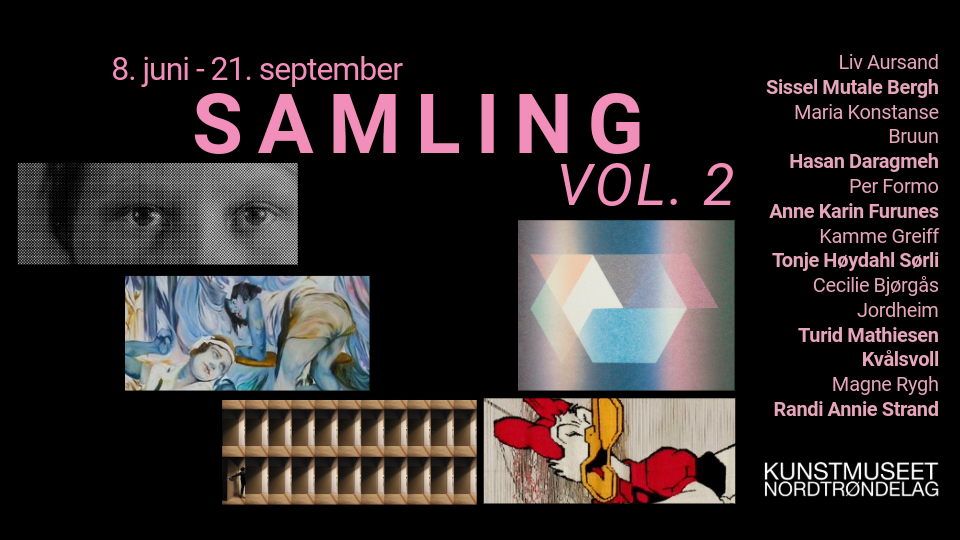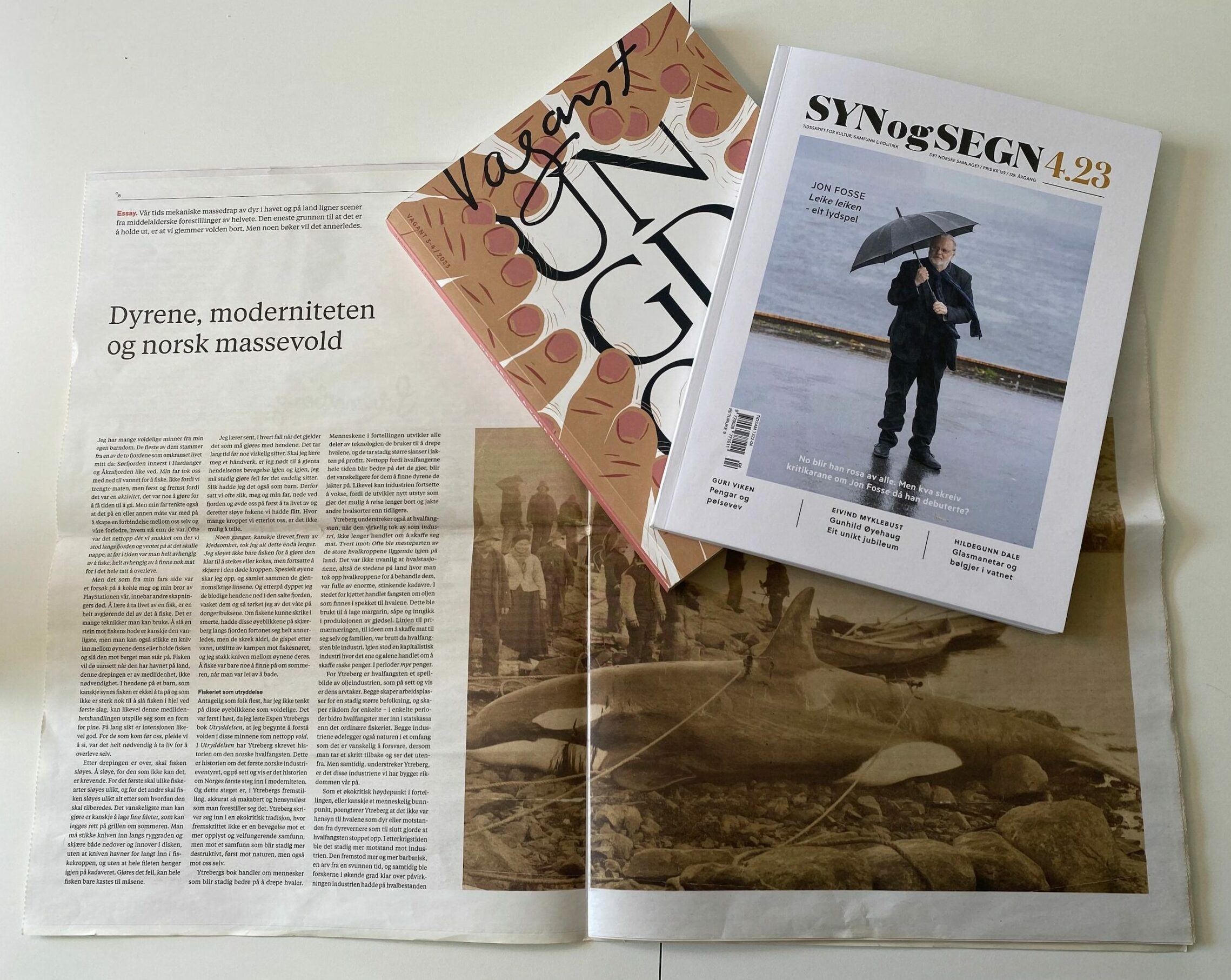Taking Up Arms
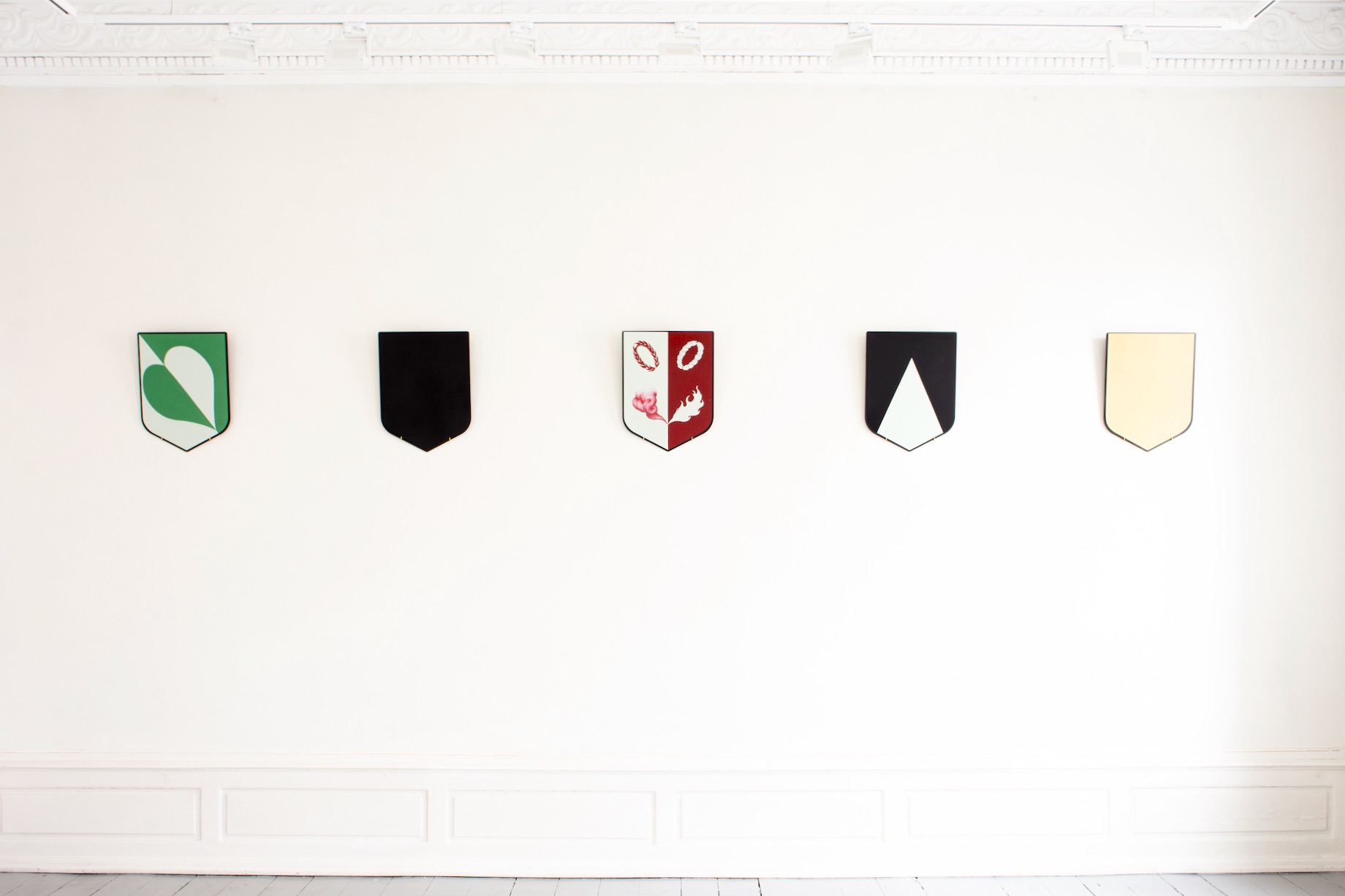
Reviews, Eline Bjerkan 02.05.2022
Trondhjems kunstforening has been sealed. The airy, venerable rooms are almost empty. All they contain now is a line of painted aluminium coats of arms that runs around the walls. The colourful emblems bring the pomp and splendour of the past to life, as do the building’s ornamental cornices, the high ceilings, and the imposing double doors. The coats of arms serve to remind us of the era in the 19th century when the house was a bishop’s residence and of the power that went with such an office.
It turns out, however, that the impetus for the coats of arms in the exhibition Den norske idealstaten (The Norwegian Ideal State) by the artist group Alt går bra is far more socially inclusive. The shields are inspired by interviews the artists conducted with the nation’s schoolchildren and pensioners, and with people in sports clubs, libraries, and even bars. The interviewees were asked to describe their dreams for society in the future, and it was these visions that were translated into heraldic designs.
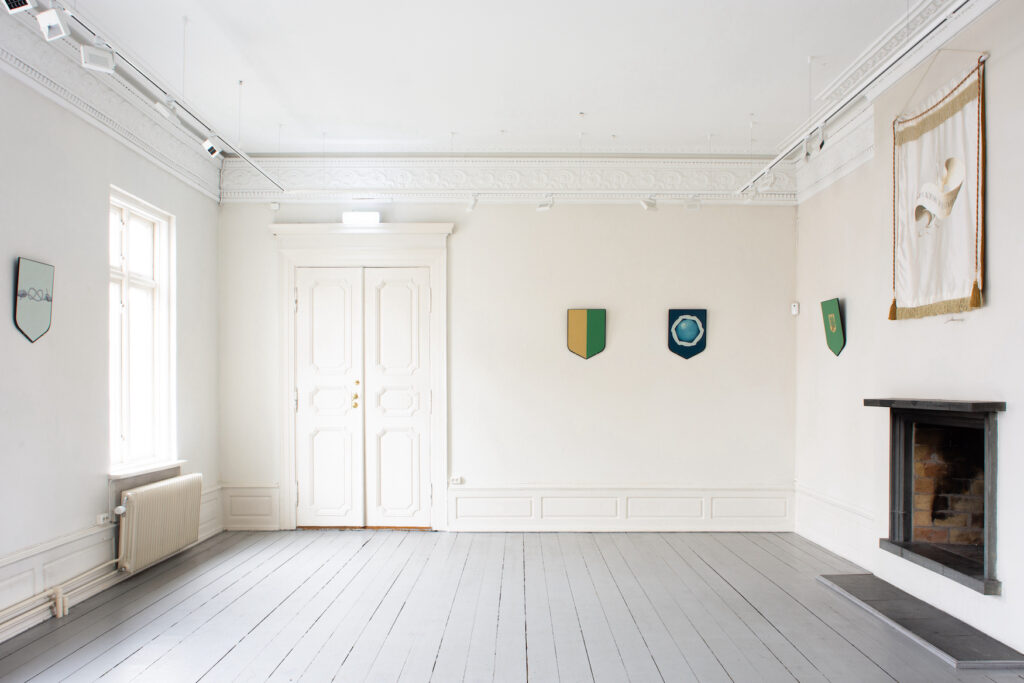
Some of the coats of arms are fairly straightforward. In accordance with the rules of heraldry, they feature simple emblems and clear colour fields of green, blue, red, yellow, and white. Others are more intricate, such as Noas Ark (Noah’s Ark), a variation on the biblical theme. This particular shield is divided diagonally and has a white dove of peace holding an olive branch in one field and the ark on top of Mount Ararat in the other. On another wall, we find another familiar pictorial symbol: eternity represented by a snake biting its own tail. Also in the same room is a white shield with a burning red heart at its centre. This was a common heraldic symbol during the Middle Ages, although today it can just as well allude to the aesthetics of emojis or tattoos.
Many of these works seem remarkably generalised or abstracted, to the extent that essentially they amount to reproductions of surfaces and patterns. One can only guess at the particular conversations, with whom and from where, that inspired the various designs. To be frank, the symbolism in some of the shields, such as Noas Ark and the one with the snake, Ouroboros, is so familiar as to deprive the works of meaning. It could be that the artists included these historical devices in the hope that they would reinforce the exhibition concept, whereas ultimately they end up flattening the meaning. What we are presented with is a rather general message from an undefined sender that an ideal state presupposes abstract values such as unity, religion, and peace.
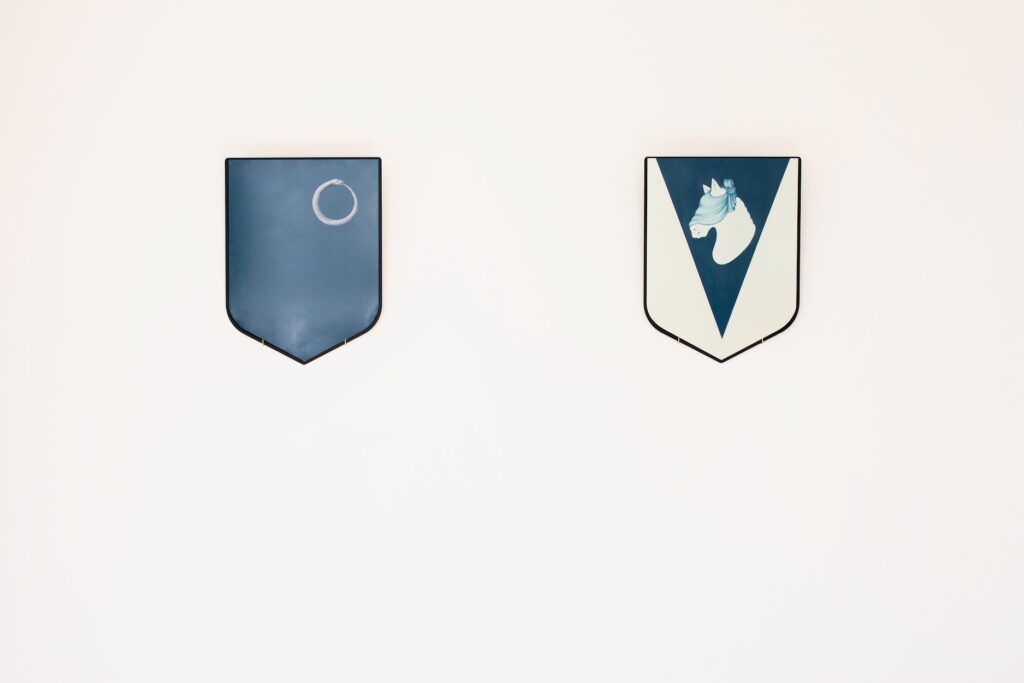
At the same time, this is perfectly in line with the collectivist framework for the project. Could an ideal ever be anything other than a simplification? Here we find the starting point for a train of thought that may prove interesting. When we look at things from this angle, however, the artists’ preparatory work seems to lose some of its relevance, since no one is likely to dispute the claim that something like love should be considered ideal. In a way, this is a pity, because the process certainly seems to have thrown up some interesting results. For example, one notable message within the feedback from the interviews was a widespread desire for more physical meeting places. Those interviews were conducted in 2019, shortly before the outbreak of the corona pandemic and the imposition of the social restrictions that ensued. But the only time this information was mentioned to the visiting public was during the speeches at the exhibition opening.
That said, a few of the coats of arms do in fact seem to tell more independent stories. One of them is diagonally divided into two fields, one blue, one white, with a king’s crown at the centre. Above the crown is the image of a hand holding a circle, which contains a human eye. This device comes across as an original variation on the omniscient eye, combined with what I interpret to be power (the crown) and the energy to act (the hand). Interestingly, the angle of the eye, glancing upwards, makes this omniscient power seem somewhat doubtful or worried. Another shield that stands out has a yellow background and the heads of two cod fish facing each other in profile. Running diagonally between them is a cylinder held at either end in the gaping mouths of the fish. The fish is a much used visual symbol in many contexts, not least in Christianity. In this case, however, the animals seem less stylised and impersonal and are probably intended as a reference to Norway as a fishing nation and the environmental challenges we face.
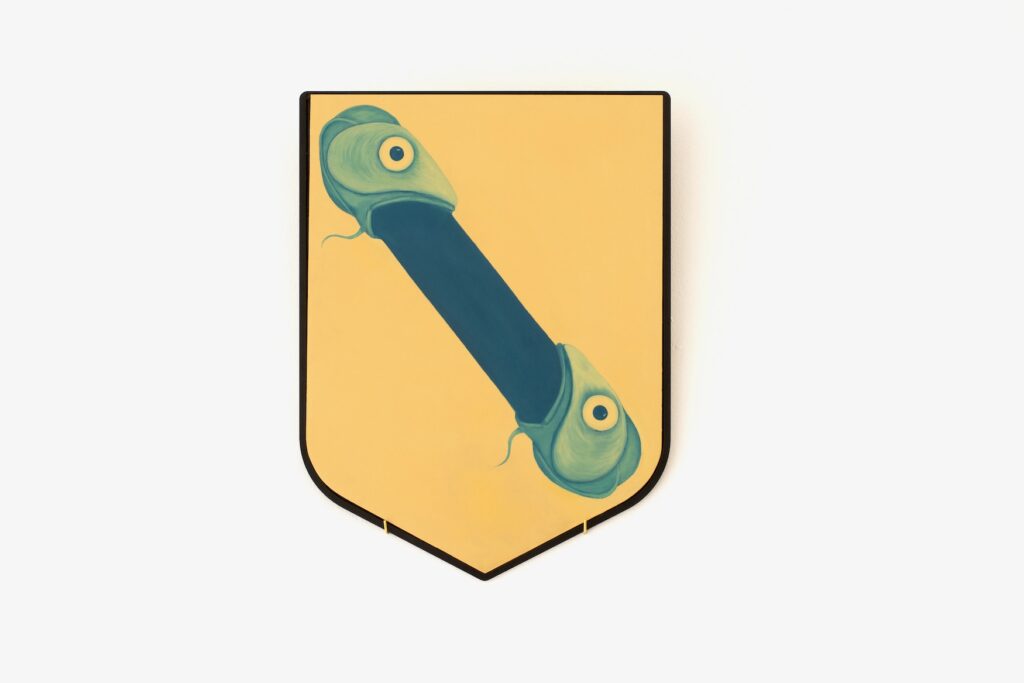
In the two cases just described, the interaction between established symbolism and specific scenarios creates interest and expands the scope for interpretation. In effect, the concept of the ideal state becomes more concrete and topical, while simultaneously maintaining the principle of unity. Moreover, these works are examples of good craftsmanship, with designs that are elegantly composed and skilfully executed. I would have welcomed it if more of the coats of arms displayed the same ambiguity. Bearing in mind that the shield was originally a piece of military equipment, the exhibition can also be read as a commentary on recent global news and the well-worn phrase “truth is the first casualty of war”. War erases nuances, and in the same way Den norske idealstaten takes up arms in defence of archetypes.
Den norske idealstaten
Alt Går Bra
Trondhjems Kunstforening
21.04. – 08.05.22
Original text translated by Peter Cripps / The Wordwrights
